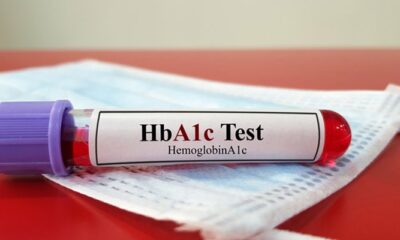The prediabetic diagnosis can feel like a looming storm cloud. Your blood sugar levels are elevated, but not quite high enough for a full-blown diabetes diagnosis. However, this isn’t a dead end – it’s a crucial turning point. This comprehensive guide empowers you to understand the transition from prediabetes to diabetes, and equips you with powerful strategies to prevent the storm from ever hitting.
Demystifying Prediabetes: A Warning Light, Not a Sentence
Prediabetes signifies that your body is struggling to manage blood sugar (glucose) levels effectively. While the body still produces insulin, the hormone responsible for unlocking cells and allowing glucose to enter for energy, it’s either not enough or your cells become resistant to its effects. This results in slightly elevated blood sugar levels, but not high enough to be considered type 2 diabetes.
The Importance of Early Intervention
Here’s why prediabetes is a critical wake-up call:
- Increased Risk of Developing Type 2 Diabetes: Left unaddressed, prediabetes significantly raises your risk of progressing to type 2 diabetes, a chronic condition that can lead to serious health complications.
- The Power of Prevention: Fortunately, the good news is that prediabetes is often reversible. By making healthy lifestyle changes, you can significantly improve your blood sugar control and significantly reduce your risk of developing full-blown diabetes.
Understanding the Transition: Recognizing the Signs of Worsening Blood Sugar Control
While prediabetes itself might not have any noticeable symptoms, some signs might indicate worsening blood sugar control and a potential transition towards diabetes:
- Increased thirst and urination: When your blood sugar levels rise, the kidneys work overtime to remove excess glucose from the bloodstream, leading to frequent urination and increased thirst.
- Fatigue and lack of energy: Chronically high blood sugar levels can deprive your cells of their primary energy source, leading to fatigue and tiredness.
- Slow-healing wounds: Impaired circulation and a weakened immune system can make it harder for wounds to heal properly.
- Blurred vision: High blood sugar can damage the blood vessels in the eyes, leading to blurred vision.
If you experience any of these symptoms, it’s crucial to consult your doctor to monitor your blood sugar levels and adjust your management plan if needed.
Taking Charge: Strategies to Prevent Diabetes
The power to prevent diabetes lies in your hands. Here are some effective strategies to improve blood sugar control and prevent the transition:
- Embrace a Balanced Diet: A healthy diet forms the cornerstone of diabetes prevention. Focus on whole grains, fruits, vegetables, and lean protein. These foods provide sustained energy, minimize blood sugar spikes, and keep you feeling full. Limit processed foods, refined carbohydrates, added sugars, and unhealthy fats.
- Move Your Body Regularly: Physical activity is a potent weapon in your diabetes prevention arsenal. Aim for at least 150 minutes of moderate-intensity exercise or 75 minutes of vigorous-intensity exercise per week. Find activities you enjoy – brisk walking, swimming, cycling, dancing, or even gardening are all excellent choices.
- Manage Stress Effectively: Chronic stress can elevate blood sugar levels. Explore stress-relieving techniques like yoga, meditation, deep breathing exercises, or spending time in nature.
- Maintain a Healthy Weight: Losing even a modest amount of weight, especially if you’re overweight or obese, can significantly improve insulin sensitivity and blood sugar control.
- Prioritize Quality Sleep: Aim for 7-8 hours of quality sleep each night. When sleep-deprived, your body produces stress hormones that can disrupt blood sugar regulation.
Beyond the Basics: Optimizing Your Prediabetes Management
While these core strategies are powerful, here are some additional tips to optimize your prediabetes management:
- Work with a Healthcare Professional: Collaborate with your doctor and a registered dietitian to develop a personalized management plan tailored to your specific needs and preferences.
- Consider Medication: In some cases, your doctor may prescribe medication like metformin to improve insulin sensitivity and further control blood sugar levels.
- Monitor Your Blood Sugar: Regularly monitoring your blood sugar levels provides valuable insights into how your body reacts to food, exercise, and medications. This empowers you to make informed decisions about your diabetes prevention journey.
- Seek Support: Connect with support groups or communities focused on prediabetes or diabetes. Sharing experiences and learning from others can be invaluable.
- Celebrate Your Victories: Focus on the progress you’re making! Celebrate healthy food choices, consistent exercise routines, and maintaining a positive attitude.
Empowerment Through Knowledge: Understanding the Science Behind Prevention
Understanding the science behind prediabetes and diabetes prevention can be empowering. Here’s a glimpse:
- Insulin Resistance: In prediabetes, your cells become somewhat resistant to the effects of insulin. This means the “key” doesn’t unlock the cells as efficiently, leading to glucose buildup in the bloodstream.
- Lifestyle Changes and Improved Insulin Sensitivity: By adopting healthy lifestyle practices like diet and exercise, you can improve your body’s ability to utilize insulin effectively, leading to lower blood sugar levels.
- The Power of Small Changes: Don’t get overwhelmed by the need for drastic changes. Even small, sustainable modifications to your diet and exercise routine can have a significant impact on blood sugar control.
Long-Term Benefits: Embracing a Healthy Lifestyle for Overall Wellbeing
The benefits of preventing diabetes extend far beyond simply avoiding the condition itself. By adopting a healthy lifestyle, you’re investing in your overall well-being:
- Reduced Risk of Other Chronic Conditions: Lowering your risk of type 2 diabetes also reduces your risk of developing other chronic conditions like heart disease, stroke, and certain cancers.
- Improved Energy Levels: With better blood sugar control, you’ll experience more sustained energy levels throughout the day, allowing you to live life to the fullest.
- Enhanced Mood and Well-being: A healthy lifestyle has a positive impact on your mental and emotional well-being, promoting better sleep, reduced stress, and a more positive outlook on life.
Living a Life Free from Diabetes: A Sustainable Approach
Preventing diabetes isn’t about a quick fix; it’s about embracing a sustainable lifestyle. Here are some tips for lasting success:
- Find What Works for You: There’s no one-size-fits-all approach. Discover healthy food choices and physical activities you genuinely enjoy and can incorporate into your daily routine.
- Focus on Progress, Not Perfection: There will be setbacks and slip-ups. Don’t get discouraged – focus on the progress you’re making and get back on track with your healthy habits.
- Make it a Family Affair: Involve your family and loved ones in your healthy lifestyle journey. Enjoy healthy meals together, plan family outings that involve physical activity, and create a supportive environment for everyone.
- Reward Yourself: Celebrate your milestones and achievements! This reinforces positive behaviors and keeps you motivated on your journey.
A Final Word: Hope and Empowerment
A prediabetes diagnosis doesn’t have to be a harbinger of doom. It’s a powerful opportunity to take charge of your health and prevent diabetes. By adopting healthy lifestyle changes and working with your healthcare team, you can significantly reduce your risk of developing type 2 diabetes and live a long, healthy life. Remember, you have the power to write your own health story – choose prevention, choose a healthier you!

 Diabetology2 weeks ago
Diabetology2 weeks ago
 Diabetology2 weeks ago
Diabetology2 weeks ago
 Diabetology1 week ago
Diabetology1 week ago
 Diabetology1 week ago
Diabetology1 week ago
 Diabetology1 week ago
Diabetology1 week ago
 Diabetology2 weeks ago
Diabetology2 weeks ago
 Diabetology1 week ago
Diabetology1 week ago
 Diabetology2 weeks ago
Diabetology2 weeks ago







